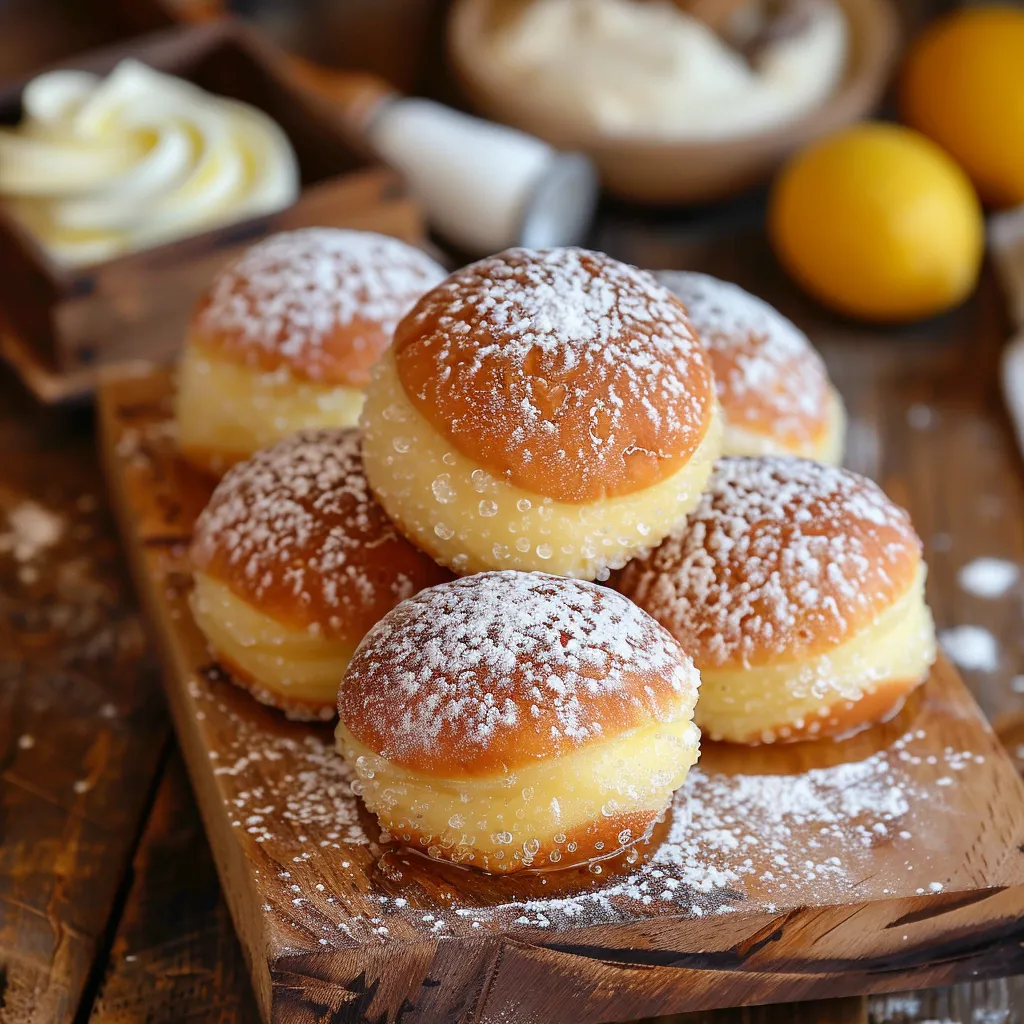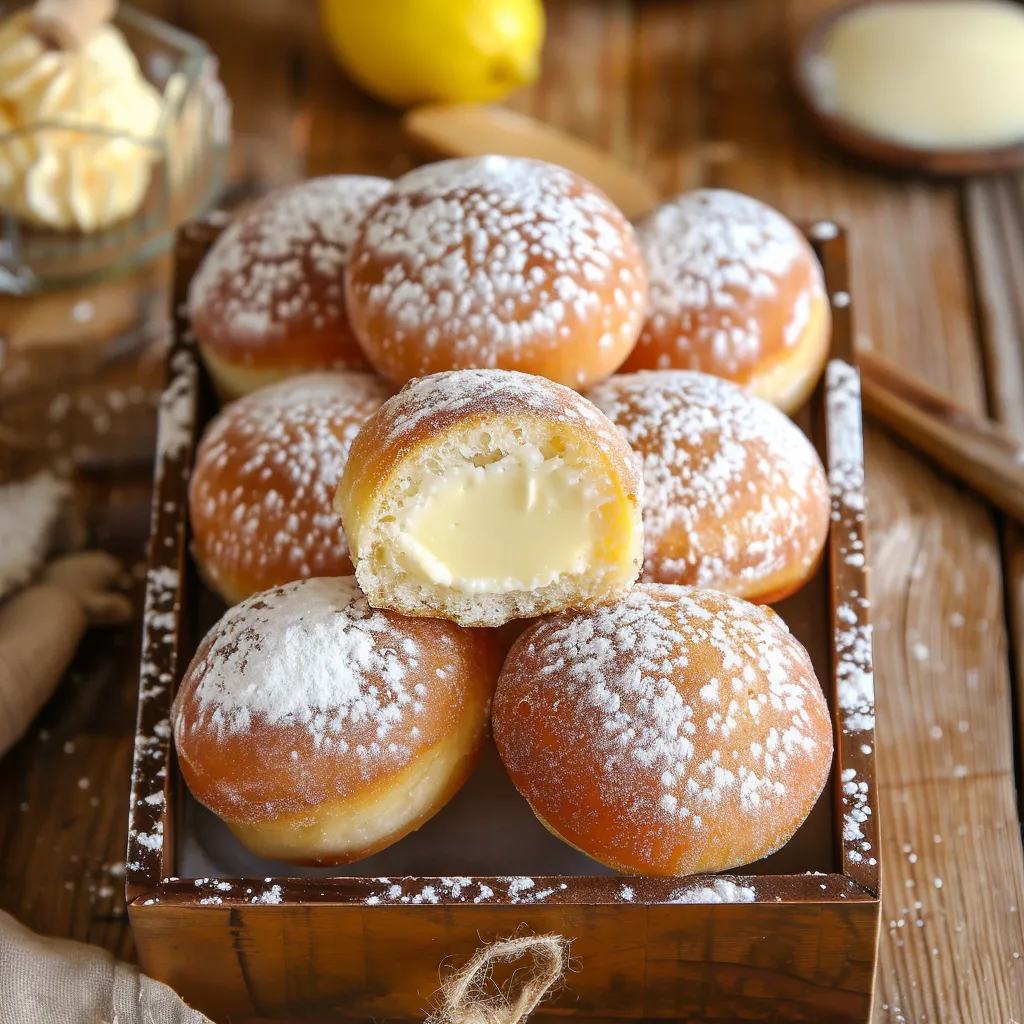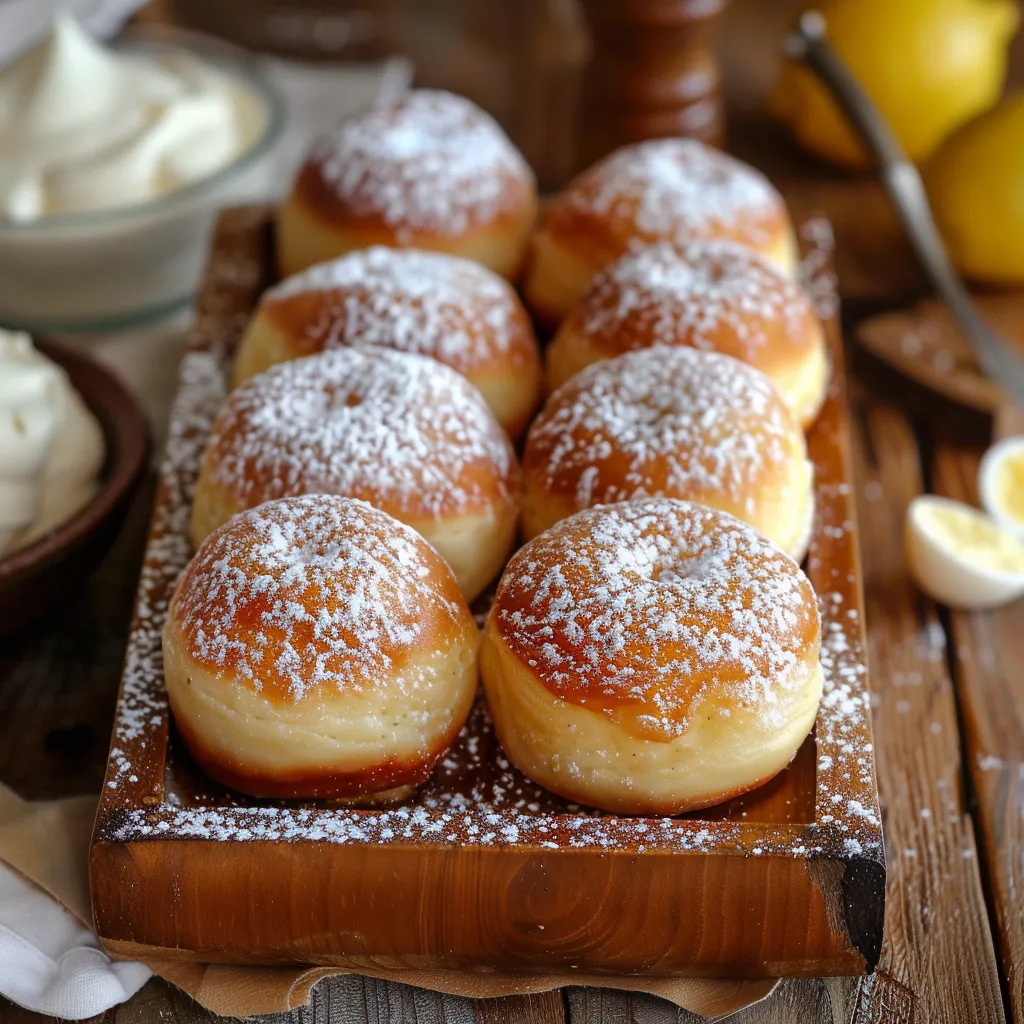 Pin it
Pin it
The aroma of freshly fried Bomboloni brings the essence of Italian mornings right into your kitchen. These pillowy-soft doughnuts, with their delicate sugar coating and generous filling of silky pastry cream, capture the authentic taste of Italian pastry-making tradition that's been perfected over generations in cafes and home kitchens across Italy.
My first attempt at making Bomboloni transported me straight back to early mornings in Florence, where I learned this recipe from a third-generation baker. He taught me that patience during the rising process is what transforms ordinary dough into these ethereal treats.
Essential Ingredients for Perfect Bomboloni
- Italian flour: Creates that distinctive tender crumb and delicate texture. The fine milling is crucial for achieving authentic results
- Fresh eggs: At room temperature ensure proper dough development and that signature light texture
- High-quality whole milk: Adds richness and helps activate the yeast properly
- European-style butter: With higher fat content creates a more tender, flavorful doughnut
- Pure vanilla extract or vanilla bean seeds: Provide depth of flavor that makes these doughnuts irresistible
Creating Your Bomboloni
- Begin your dough journey:
- Combine your flour and yeast in a large bowl, creating a well in the center. Pour in your warm milk mixture, allowing the ingredients to slowly incorporate. This gentle beginning sets the stage for perfectly tender doughnuts.
- Master the kneading process:
- Work your dough with purpose but gentleness. You'll notice it transforming under your hands, becoming smooth and elastic. The dough should feel like silk when it's ready, with tiny air bubbles developing beneath the surface.
- First rise patience:
- Place your dough in a lightly oiled bowl, covering it with a damp cloth. The dough needs time to develop its structure and flavor, nearly tripling in size over 2-3 hours in a warm spot.
- Shape with care:
- Roll your dough with gentle, even pressure. Use your cutter with decisive movements, avoiding twisting which can seal the edges and prevent proper rising.
- Second rise attention:
- Arrange your cut doughnuts on parchment paper, giving them space to expand. This second rise is crucial for developing that characteristic light texture.
 Pin it
Pin it
Growing up in an Italian-American household, my nonna always insisted on using real vanilla beans in the pastry cream. She'd say the tiny black specks were like 'little stars in a creamy sky' - a detail that made her Bomboloni legendary at every family gathering.
The Art of Perfect Frying
Perfect oil temperature maintenance is the secret to achieving that coveted golden exterior. Testing the oil with a small piece of dough helps gauge readiness - it should float and bubble gently, creating a dance of tiny bubbles around its edges. Each Bomboloni needs space to expand and brown evenly, creating that characteristic light ring around its middle.
Mastering the Filling
The art of filling these Italian doughnuts requires both patience and precision. Waiting until they're completely cooled prevents the cream from melting, while finding the perfect spot to insert your piping tip ensures even distribution of filling. I've learned that a gentle squeeze while slowly withdrawing the tip creates the most satisfying filling-to-dough ratio.
Creative Variations
Transform your Bomboloni into unique creations by experimenting with different fillings. Nutella-filled versions bring a modern twist to this classic, while seasonal fruit preserves connect the recipe to Italian traditions of using local ingredients. Some contemporary Italian bakeries even offer savory versions filled with ricotta and herbs.
Proper Storage Methods
Store unfilled Bomboloni in an airtight container at room temperature for up to two days. Once filled, they're best enjoyed within 24 hours. If you need to prepare in advance, freeze the unfilled, uncoated doughnuts for up to a month, then thaw, warm slightly, and fill just before serving.
 Pin it
Pin it
After years of perfecting this recipe, I've discovered that Bomboloni are more than just doughnuts - they're a meditation in patience and precision. The process of creating these pillowy delights, from the gentle kneading to the careful filling, becomes a ritual that connects us to the heart of Italian baking tradition. When you bite into a perfectly made Bomboloni, you're not just tasting a doughnut; you're experiencing centuries of Italian pastry craftsmanship in every bite.
Frequently Asked Questions
- → Why do I need to use two types of flour for Bomboloni?
- The combination of bread flour and 00 flour creates the perfect texture - bread flour provides structure while 00 flour keeps them tender. All-purpose flour can substitute for 00 flour if needed.
- → How do I know when the oil is at the right temperature?
- Use a sugar thermometer to maintain the oil at 170°C/337°F. If the oil is too hot, the outside will brown too quickly while the inside stays raw.
- → Can I make the dough ahead of time?
- Yes, you can prepare the dough and let it rise overnight in the fridge. Bring it to room temperature before shaping and second proving.
- → Why did my pastry cream turn lumpy?
- Lumpy pastry cream usually happens from heating too quickly or not whisking constantly. Heat slowly on low heat and whisk continuously for smooth results.
- → How long do filled Bomboloni last?
- Filled Bomboloni are best eaten the same day but can be stored in airtight containers for 1-2 days. The texture is always best when fresh.
